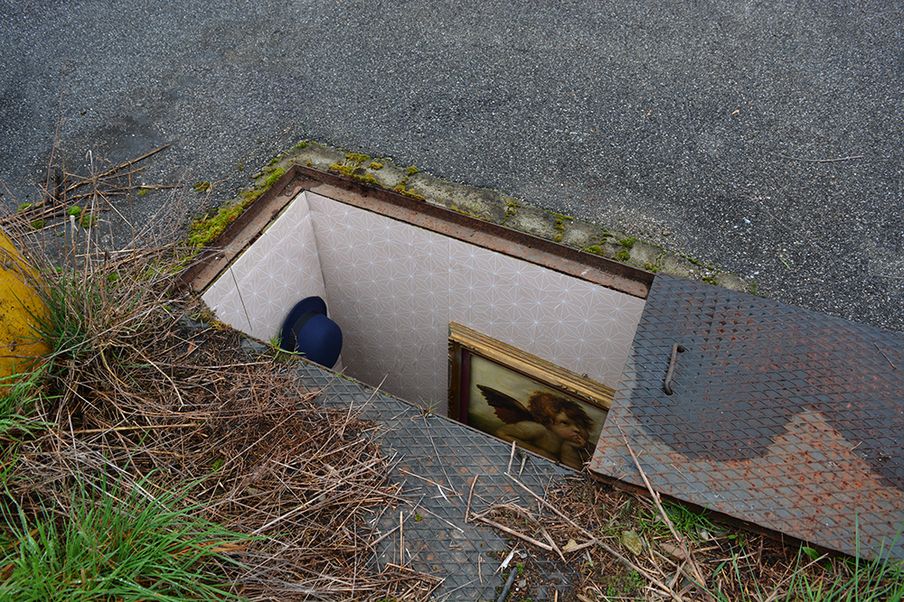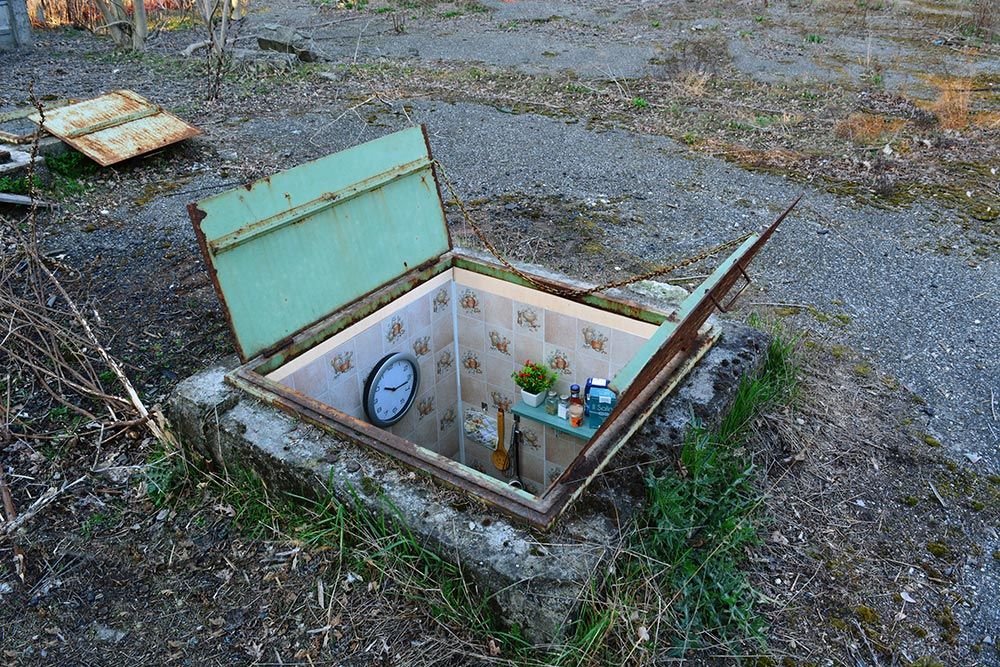This Artist Builds Tiny Rooms in Milan’s Forgotten Manholes
The seemingly whimsical project has a darker meaning
/https://tf-cmsv2-smithsonianmag-media.s3.amazonaws.com/filer/f0/ae/f0ae3e0b-5a1c-40d5-955d-4dd9307b24e6/manhole3.jpg)
Throughout Milan’s Lodi neighborhood in Italy are a series of strange rooms that are hidden beneath the ground under abandoned manhole covers and maintenance vaults. Below one metal grate, there's a cramped shower. Open a rusted trapdoor to reveal a miniature kitchen, with pots and pans and utensils hanging on the wall. Under that manhole, find a tiny living room complete with gaudy, pink wallpaper.
These subterranean rooms are part of an installation piece titled “Borderlife” by street artist Biancoshock. But while his secret rooms might seem like a charming setting for a Hayao Miyazaki film, they are actually meant to evoke the serious problem of European homelessness, Jack Shepherd reports for the Independent.
For years, many European countries have struggled with a growing population of homeless people, some of whom have taken to city sewers and underground heating tunnels for shelter. One of the most notorious underground communities in Romania's capital, Bucharest, reportedly draws hundreds of people, many of whom are afflicted with serious illnesses and drug abuse, Carey Dunne writes for Hyperallergic.
“If some problems can not be avoided, make them comfortable,” Biancoshock writes on his website.

While the “Borderlife” rooms may sport the trappings of a safe home, these secret rooms reflect the uncomfortable truth that many of the world’s most vulnerable people are often pushed out of sight and out of mind, Dunne writes.
Many of Biancoshock’s past works have played with little facets of modern urban life, though perhaps not quite in as confrontational a manner as “Borderlife.” His 2011 piece titled “Antistress For Free” saw the street artist installing sheets of bubble wrap at bus stations across Milan for commuters to play with waiting for their buses. Two years later, Biancoshock donned a goofy orange costume and gave high-fives to commuters entering a Milan subway station for a performance fittingly called “High Five! Station,” John Metcalfe writes for CityLab. Even in these seemingly more gentle artworks, Biancoshock uses the disruption of everyday routines to try and jolt people into being more aware of the world around them.
“They are simply opportunities to communicate and provoke reactions from common people,” Biancoshock wrote in 2013. “I'm talking about all those who, although with little or any artistic education, still want to be surprised and moved by something that was left on the street for all to see.”
“Borderlife” may touch on a darker topic, but it challenges its audience in the same ways.
